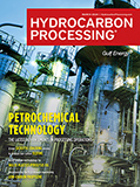Unload the SRU to reduce operating costs and plugging problems
The SWAATS process can unload SRU capacity and reduce plugging problems and operating costs in a safer and environmentally-friendly way, especially as refiners find rising amounts of ammonia and SWSG.
IP: 18.116.239.195
The Authors
Anderson, M.C. - Thiosolv LLC, Houston, Texas
received a BSChE degree from the University of Massachusetts at Amherst in 1967 and, following a year of work in a PhD program at Stanford University, joined UOP. At UOP, he performed startup and technical support for petrochemical units in the US and Europe. Additionally, he managed UOP’s development group for petrochemical processes. Mr. Anderson also worked as a project and plant manager for a number of refineries in Texas. In the early 2000s, he managed the development of Thiosolv’s SWAATS process for the conversion of sour water stripper gas to ammonium thiosulfate and provided consulting services to global customers. He holds 13 US patents, including three in fractionation and six for applications of thiosulfate chemistry.
Kolodziej, R. - Wood Group Mustang, Houston, Texas
has more than 30 years of experience in process/project engineering and development roles serving the refining, petrochemicals, chemicals, polymers and gas processing industries. He has been involved with several new technology development projects, including bio-related projects. Most recently, Mr. Kolodziej has been involved with Gevo’s projects for renewable isobutanol and various petrochemicals. He is also responsible for process plant project development for Wood Group Mustang in the Far East, and he holds US and international patents in hydrotreating. Mr. Kolodziej holds a BS degree in chemical engineering from the University of Illinois in Chicago and an MBA degree in finance from DePaul University in Chicago, and he is a registered professional engineer in Illinois.
Related Articles
From the Archive
Current Digital Edition
Sign up to Receive Our Newsletter
Latest News
Construction Boxscore: Project Spotlight
Project:
Long Son Petrochemicals Complex
Location:
Long Son, Vietnam
Operator:
Siam Cement Group
Cost:
$5.4 B
Capacity:
1.65 MMtpy
Completion date:
2023
Status:
Under Construction






Comments